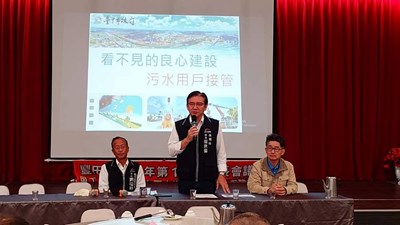
The Water Resources Bureau highlighted its pro-active efforts to boost the prevalence of pipeline connections in the former Taichung County region. This involves initiatives to improve living conditions by implementing sewer line connection projects in Fengyuan, Dali, Taiping, and the Taichung Port Designated Zone in phases, aiming to bridge the urban-rural development gap. Currently, Taichung City has plans for 19 sewage systems. Alongside ongoing sewer line connection projects in urban areas, the city government is also striving for better infrastructure in former county areas to narrow the development gap. This pro-active approach has resulted in the connection of house sewer lines for 106,000 households between 2019 and 2023.
The Water Resources Bureau noted that after the completion of sewage system improvements, it would not only enhance the environment by eliminating unpleasant odors and mess but also effectively tackle public health issues. Moreover, the sewage, once purified and filtered, could be re-used, such as for industrial purposes. This would ensure that domestic water usage is not affected by industrial demands while stabilizing industrial water sources, thus significantly lowering the risk of water shortages in Taichung City.
Director Fan Shih-i of the Water Resources Bureau noted that prior to obtaining construction licenses or use permits, newly constructed, expanded, or renovated buildings must undergo a review of their drainage facilities and pass completion inspections. This ensures that discharge outlets are installed in specified locations, facilitating future connections of public sewage pipelines at the boundary between public and private lands. This will eliminate the need for excavation, modification, and repair work on private land, leading to cost and time savings of the projects. Additionally, it is hoped that through this mechanism, direct inclusion or provision of switching devices can extend to public roads beyond the construction base. So that when public sewage pipelines reach these areas in the future, there will be no need to dismantle the construction base. Instead, the pipeline connection can be executed outside the construction line, expediting the pipeline connection progress for Taichung residents.
The Water Resources Bureau noted that sewage systems are crucial benchmarks for urban modernization and play a vital role in addressing urban pollution and improving environmental health, serving as tangible steps to enhance citizens' quality of life. Going forward, the city government will remain dedicated to advancing sewage system development to foster a more livable environment for residents, thereby achieving the vision of a thriving Taichung with abundant clean water. (2/26 *14)* Water Resources Bureau
Contact Person: Mr. Huang, Sewage Facilities Division, Water Resources Bureau, Taichung City Government
Contact Number: 04-22289111 ext. 53657

 Facebook
Facebook
 Twitter
Twitter
 LINE
LINE